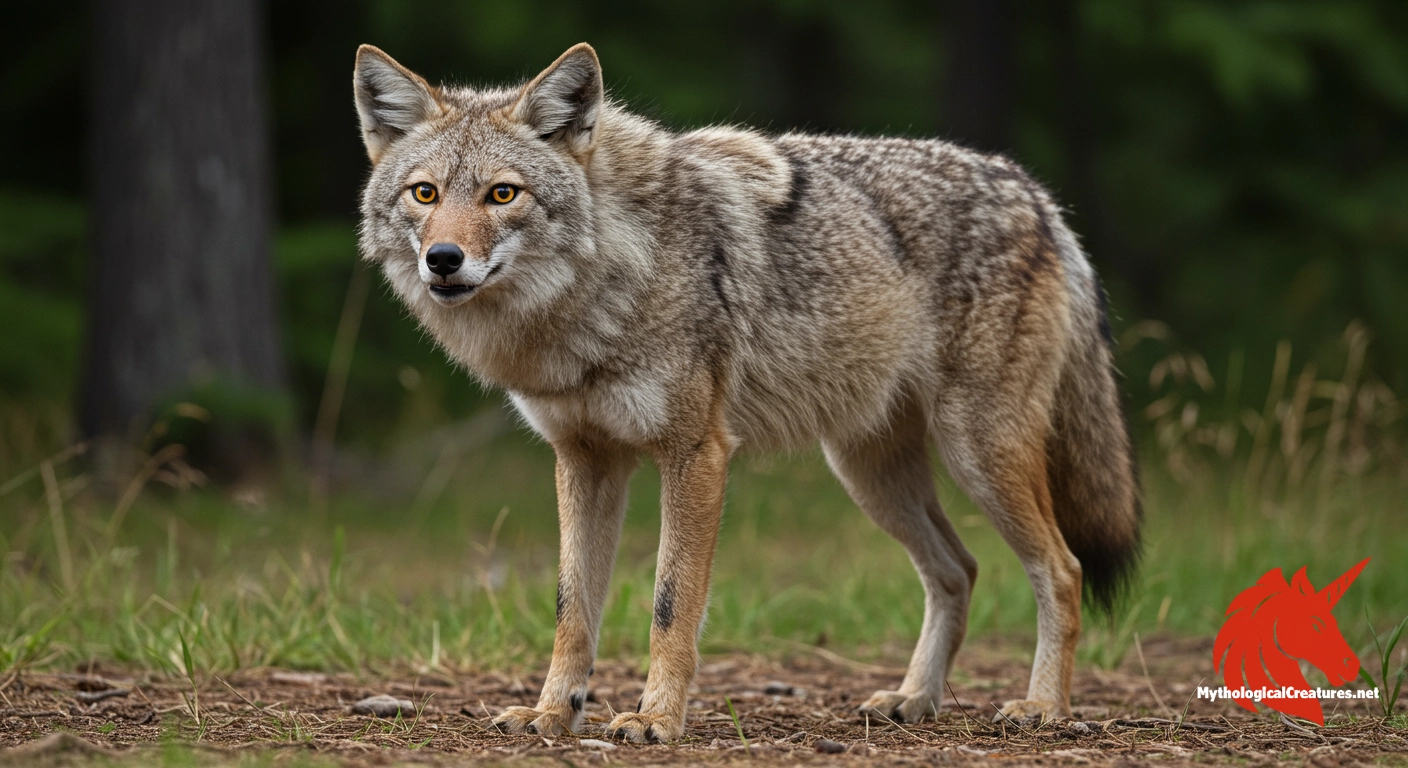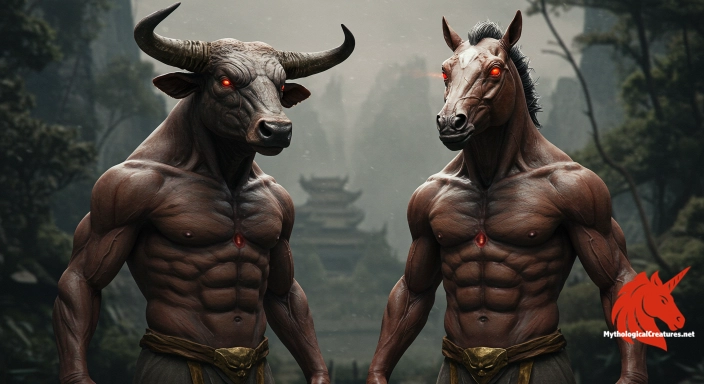Nanabozho: Nanabozho is a central spirit in Ojibwe tradition, revered as a trickster and culture hero.

Nanabozho
Nanabozho - Serves as a vehicle for education, moral lessons, and cultural identity in Ojibwe tradition
Origins & First Encounters
Nanabozho stands as a central figure in the tapestry of Anishinaabe cultural heritage, embodying both the creative force and the playful mischief that animate traditional storytelling. His myth is deeply rooted in Ojibwe aadizookaan, where vibrant oral traditions have celebrated his adventures for countless generations. Emerging as a dual figure—a creator and a trickster—he challenges conventional notions of order and chaos. Early attestations of his lore are found in communal gatherings, where elders passed down his exploits with profound care and ingenuity. His stories are steeped in lessons about the natural world, human morality, and the interconnections that bind all living things. The character’s fluid nature underscores a belief that the divine does not conform to rigid expectations. Through his shifting persona, Nanabozho embodies both wisdom and folly, inviting listeners to reflect on the balance inherent in life. His enduring legacy as a guide and a disruptor continues to inspire contemporary interpretations of indigenous spirituality. The myth of Nanabozho remains a dynamic emblem of resilience and creativity in the Anishinaabe worldview.
Source Texts & Tale Variants
The narrative of Nanabozho is primarily preserved through the living tradition of oral storytelling among the Ojibwe people, where each retelling infuses his legend with contextual life lessons. Early ethnographers and recorders of indigenous lore began to document these tales, ensuring that his exploits survived the passage of time. The accounts range from creation myths that illustrate the birth of the world to tales of clever pranks that expose the quirks of human nature. Variants of his story often manifest unique details that reflect the cultural and environmental backdrop of different communities. Some recordings highlight his role as a benevolent creator, while others focus on his unpredictable trickster antics. These multiple versions are testimony to the fluidity and adaptability of oral traditions. As stories were passed down, they absorbed local perspectives, imbuing Nanabozho with layers of meaning and subtle shifts in character. Written documents and later scholarly works have sought to capture his essence, although they only partially convey the spirit’s full dynamism. Every variant contributes to a broader understanding of his myth, reinforcing the centrality of oral narrative in indigenous cultures. The cumulative body of these sources serves not only as a record of ancient belief but also as a living dialogue between past and present.
Form & Powers
Nanabozho’s physical form is as fluid and multifaceted as the narratives that celebrate his exploits, with his appearance continuously shifting between human and animal manifestations. When depicted in human guise, he is often portrayed with an ambiguous allure—carrying both gentle wisdom and a spark of mischief in his expressive eyes. His features, marked by an almost ethereal glow, hint at a being who transcends the mortal realm. In his animal forms, such as that of a coyote or a raven, distinct traits like a sleek coat, agile movements, and keen, alert eyes come to the forefront. These depictions are rich in symbolic nuance, emphasising qualities like cunning, resilience, and the ability to navigate both the natural and the supernatural. Artists and storytellers have long celebrated his capacity to merge gendered traits, reflecting both masculine and feminine energies. The depictions in indigenous art range from intricate carvings to vivid paintings, each capturing fleeting moments of his transformation. His form is never static, often shown with an aura or subtle luminescence during moments of supernatural intervention. Such portrayals underscore the idea that the divine essence embodied by Nanabozho defies any singular visual definition.
Regional Faces
Across varying regions where Anishinaabe traditions are upheld, Nanabozho’s story takes on distinctive local flavours that mirror the cultural and ecological settings. In some communities, his narrative is interwoven with creation myths that specifically recount the origins of local rivers, forests, or mountain ranges. In these areas, his role shifts subtly from a mischievous vagabond to a reverential guide whose actions set the natural order in motion. Other regions accentuate his trickster qualities, weaving elaborate tales of cunning pranks and unexpected reversals that serve as moral lessons. The local fauna and landscapes exert their influence on his depictions, with some communities favouring his transformation into animals native to their surroundings—be it the clever coyote of open plains or the mysterious raven of dense woodlands. Oral storytellers adapt his myth to resonate with contemporary concerns, whether they relate to environmental stewardship or social harmony. These regional variations illuminate the adaptability of Nanabozho’s legend, evolving in tandem with the community’s changing aspirations and challenges. Ultimately, the diverse portrayals across regions enhance the universal appeal of his myth, while simultaneously reaffirming the uniqueness of each local cultural expression.
Cultural Parallels
Nanabozho’s multifaceted character lends itself to fascinating comparisons with trickster and culture hero figures from various mythological traditions around the world. His role as both a creator and a subversive prankster finds echoes in figures like Loki from Norse mythology and Anansi from West African lore, each of whom uses wit and cunning to blur the lines between order and chaos. Like many global tricksters, Nanabozho challenges the established norms and invites a reconsideration of how wisdom and folly interweave. His shapeshifting abilities resonate with other deities known for their morphological fluidity, emphasising that change is an intrinsic part of the natural world. These parallels highlight a universal theme: the capacity to disrupt order in order to renew or recreate it. Though similar in many respects to other mythic tricksters, Nanabozho’s narrative is uniquely anchored in the Anishinaabe understanding of life and the environment. His myths articulate lessons that are not only timeless but also distinctly aligned with the rhythms of nature as experienced by his people. The cross-cultural analysis of such figures enhances our appreciation for the diverse ways human societies grapple with complex ideas about creation, morality, and transformation. In essence, while Nanabozho recalls global archetypes of the trickster, his story remains deeply enmeshed in the cultural and spiritual fabric of the Anishinaabe people.
Legacy & Modern Evolution
Over centuries, the myth of Nanabozho has evolved, continually adapting to new contexts while preserving the core of his ancient wisdom and irreverent spirit. In modern times, his tales are being reimagined through various media, including literature, visual arts, and theatre, all of which celebrate his dual nature as both a guide and a subversive figure. Contemporary indigenous artists and storytellers have embraced his image as a symbol of cultural resilience, weaving his timeless lessons into new narratives that address modern issues. His ability to embody transformation and challenge the status quo resonates deeply with current movements for cultural revitalisation and environmental stewardship. The retelling of his stories in academic forums, festivals, and community gatherings reaffirms his role as a dynamic bridge between the ancestral past and present realities. His legacy serves to remind both indigenous and non-indigenous audiences of the power of myth in shaping cultural identity and collective memory. As new generations explore his tales, Nanabozho continues to inspire a reawakening of traditions that celebrate both the beauty and the chaos of life. The evolution of his myth demonstrates an impressive continuity, one that adapts yet steadfastly honours the foundational values of the Anishinaabe worldview. In every retelling, his legend reinforces the message that creativity, adaptability, and a playful defiance are crucial to the human experience.
Interesting Fact
Nanabozho's tales have influenced a wide range of art, literature, and modern storytelling, demonstrating the enduring power of myth in contemporary culture.
Quick Creature Info
Origin:
Features:
Our Mythic Legendary Rating:

Also Sometimes Known As:
Habitat:
Supernatural Powers:
Physical Attributes:
Abilities:
Behavior:
Lore:
References
Discover Another Mythical Legend You May Not Have Heard Of?
Uncover the mysteries of ancient folklore and expand your knowledge of legendary beings from cultures around the world.
Dare to Meet the Ox-Head and Horse-Face....
Mythical Disclaimer: The images and data on this site are derived from various historical and literary sources, but we have found that many myths often have multiple versions and interpretations across references, sometimes contradictory. As a result, these creature depictions are artistic interpretations—imaginative blends of folklore, legend, and a dash of AI guesswork. Because creature descriptions vary widely, our illustrations and accompanying information represent our best effort to honor mythology while bridging creative gaps. Enjoy these interpretations—just remember, we've done our best to respect the stories and validate available data, but in the realm of mythology, details often shift, imagination leads the way, and nothing is ever set in stone!
Curated by the Mythological Creatures Team (rev. May 2025)
